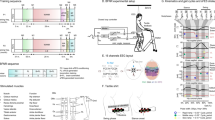Abstract
A recent study in the literature showed that eight paraplegic patients with chronic spinal cord injury, who underwent 12 months of training in brain-machine interface (BMI), based on neurorehabilitation using a virtual system and a very high cost exoskeleton, experienced neurological enhancements in somatic sensation, as well as motor improvements. A possible low-cost solution is to use a robotic monocycle instead of an exoskeleton, since the exercise of pedaling a monocycle has the potential to provide a high number of flexion and extension repetitions of the lower limb in reasonable therapeutic time periods. The objective of this work is to develop a neurorehabilitation platform based on electroencephalography (EEG), surface electromyography (sEMG) and immersive virtual reality (IVR), and using a robotic monocycle to move the user’s legs. The monocycle is instrumented with inertial sensors placed on the pedals, which is used to measure the cadence developed by the user while pedaling, and a customized electronic board to control the monocycle according to the user’s motor imagery detected through a Brain-Computer Interface (BCI) using EEG. On the other hand, sEMG signals are collected from the rectus femoris, biceps femoris, tibialis anterior and trochanteric muscles, in order to allow the identification of their onset and offset. In addition, a serious game was designed to be used as part of the rehabilitation platform. As preliminary results, the developed BCI is able recognize motor imagery patterns related to feet movements and resting state with an average accuracy higher than 80%.
Access this chapter
Tax calculation will be finalised at checkout
Purchases are for personal use only
Similar content being viewed by others
References
Donati, A.R.C., et al.: Long-term training with a brain-machine interface-based gait protocol induces partial neurological recovery in paraplegic patients. Sci. Rep. 6, 30383 (2016)
Deb, P., Sharma, S., Hassan, K.M.: Pathophysiologic mechanisms of acute ischemic stroke: an overview with emphasis on therapeutic significance beyond thrombolysis. Pathophysiology 17, 197–218 (2010)
Sommerfeld, D.K., et al.: Spasticity after stroke. Stroke 35–134 (2004)
Belda-Lois, J.M., et al.: Rehabilitation of gait after stroke: a review towards a top-down approach. J. NeuroEng. Rehabil. 1–19 (2011)
Daly, J.J., Ruff, R.L.: Construction of efficacious gait and upper limb functional interventions based on brain plasticity evidence and model-based measures for stroke patients. Sci. World J. 7, 2031–2045 (2007)
Pang, M.Y.C., et al.: A community-based fitness and mobility exercise program for older adults with chronic stroke: a randomized, controlled trial. J. Am. Geriatr. Soc. 53(10), 1667–1674 (2005)
Lohse, K.R., Hilderman, C.G.E., Cheung, K.L., Tatla, S., Van der Loos, H.F.M.: Virtual reality therapy for adults post-stroke: a systematic review and meta-analysis exploring virtual environments and commercial games in therapy. PLOS One 9(3) (2014)
Katz-Leurer, M., et al.: The influence of early cycling training on balance in stroke patients at the subacute stage. Results of a preliminary trial. Clin. Rehabil. 20(5), 398–405 (2006)
Lucareli, P.R., Greve, J.M.: Alteration of the load-response mechanism of the knee joint during hemiparetic gait following stroke analyzed by 3-dimensional kinematic. Clinics (São Paulo) 61(4), 295–300 (2006)
Hermens, H.J., et al.: European Recommendations for Surface ElectroMyoGraphy. Roessingh Research and Development, SENIAM (1999)
Blankertz, B., et al.: Optimizing spatial filters for robust EEG single-trial analysis. IEEE Signal Process. Mag. 25, 41–56 (2008)
Ang, K.K., et al.: Filter bank common spatial pattern algorithm on BCI competition IV datasets 2a and 2b. Front. Neurosci. 6, 39 (2012)
Barachant, A., et al.: Classification of covariance matrices using a Riemannian-based kernel for BCI applications. Neurocomputing 112, 172–178 (2013)
Sang-I, L., et al.: Biomechanical assessments of the effect of visual feedback on cycling for patients with stroke. J. Electromyogr. Kinesiol. 22(4), 582–588 (2012)
Author information
Authors and Affiliations
Corresponding author
Editor information
Editors and Affiliations
Rights and permissions
Copyright information
© 2019 Springer Nature Singapore Pte Ltd.
About this paper
Cite this paper
Cardoso, V.F. et al. (2019). Neurorehabilitation Platform Based on EEG, sEMG and Virtual Reality Using Robotic Monocycle. In: Costa-Felix, R., Machado, J., Alvarenga, A. (eds) XXVI Brazilian Congress on Biomedical Engineering. IFMBE Proceedings, vol 70/1. Springer, Singapore. https://doi.org/10.1007/978-981-13-2119-1_48
Download citation
DOI: https://doi.org/10.1007/978-981-13-2119-1_48
Published:
Publisher Name: Springer, Singapore
Print ISBN: 978-981-13-2118-4
Online ISBN: 978-981-13-2119-1
eBook Packages: EngineeringEngineering (R0)




